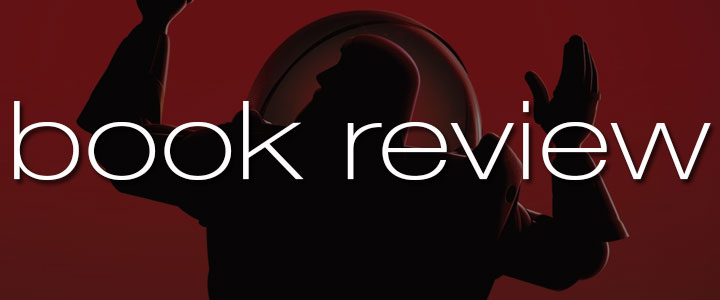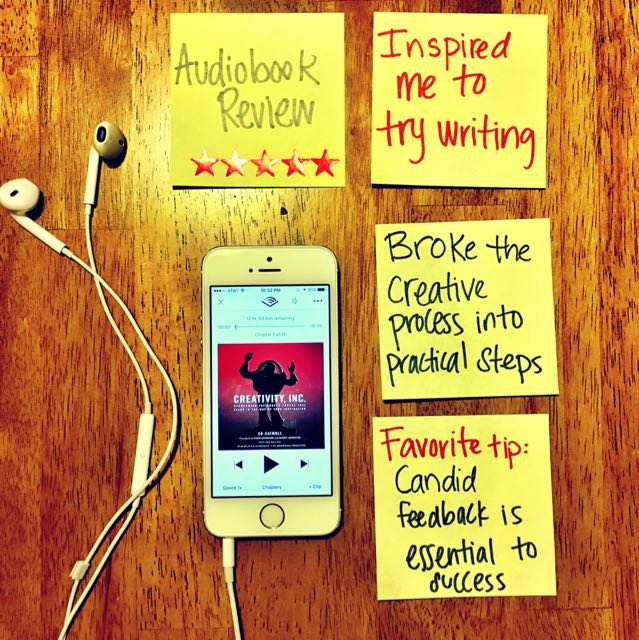
Creativity, Inc.: Overcoming the Unseen Forces That Stand in the Way of True Inspiration
by Ed Catmull
Published: April 8th 2014
(12 hrs and 52 mins)
more“What does it mean to manage well?”From Ed Catmull, co-founder (with Steve Jobs and John Lasseter) of Pixar Animation Studios, comes an incisive book about creativity in business—sure to appeal to readers of Daniel Pink, Tom Peters, and Chip and Dan Heath. Creativity, Inc. is a book for managers...
Creativity, Inc. was so inspiring to me. It broke down the creative process into steps that I could wrap my mind around. It showed me that despite the fact that these were experienced, award-winning film makers, they struggled with doubt and fear on every project and they had specific ways of combatting that. After reading this, I felt like I could do something big. I could write a book (which is a very similar process to making movies in a lot of ways). It was a life-changing, eye-opening book for me.
Here are some of the specific things I took away from this book:
- Solving problems is like trying to uproot an oak tree. It’s huge and takes a lot of attention but you can do it. But often we forget the little saplings that sprouted from the oak tree. We overlook them because they are small or we’ve gotten used to them. It’s important to solve those small problems, too.
- People are more important than ideas. People come up with the ideas after all.
- Candor is so important when creating something. It’s different than honesty. People will withhold things when they are being honest for the sake of feelings. Candor means holding nothing back.
- You must immerse yourself in a project during the creative process but then you lose perspective because you are so immersed in it. Candid feedback is essential for successfully combatting this problem.
- Obstacles to total honesty (aka candor): fear of looking stupid, fear of offending, fear of retaliation, fear of being a know-it-all, fear of being dismissed.
- Create a visual mental model to deal with the fear and uncertainty of creating something. My favorite example was the idea of digging up a dinosaur but there were a ton of examples. The mental models were there to remind you that a) it’s okay to not know everything now and b) that you could do it if you stuck with it.
What this book isn’t: it is not a memoir of Pixar’s history. There is a brief history and description of changing technology and how it applied to Ed Catmull’s life in making the first computer animated film. But Ed’s inspiration behind writing this book was to write a how-to process of staying an amazing company. He didn’t want to be a one hit wonder. He also wrote this because he achieved a huge life-long dream and he said to himself “Now what?” kind of like in Rapunzel sorry Tangled. Ed made it his goal to keep Pixar great and this was his journey in figuring out how to do that. You’ll find his advice more applicable to creative projects like books or movies but he makes an effort to show how this process is good no matter what project you do.
As far as the audiobook itself, the narrator was great but there was so much great info that I had to keep stopping it and writing stuff down!
Book Review of Creativity, Inc. on a Post-it
Find more book reviews like this on my Instagram account!










 My name is Jessica. I love to read Young Adult and classic literature. I’ve been a book blogger for six years and I haven’t gotten tired of it yet. I’m a very curious reader. Writing about all the questions and thoughts I had while reading a book is the best hobby ever.
My name is Jessica. I love to read Young Adult and classic literature. I’ve been a book blogger for six years and I haven’t gotten tired of it yet. I’m a very curious reader. Writing about all the questions and thoughts I had while reading a book is the best hobby ever.
Sounds like a very inspiring book. I love the cover!
I like the idea of breaking down the creative process into steps. That is cool.